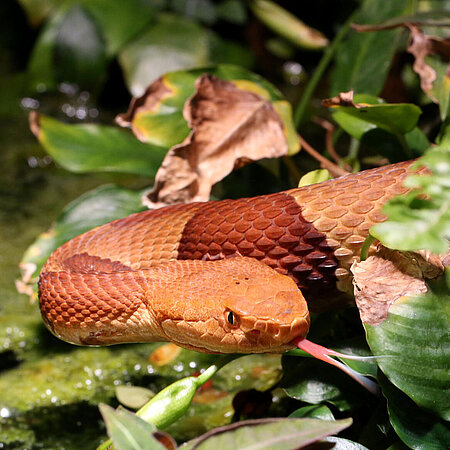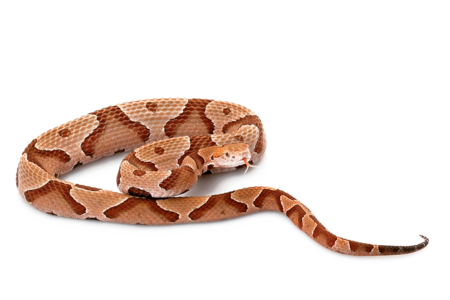Copperhead
Agkistrodon contortrix

- Family
- Pit vipers (Crotalinae)
- Habitat
- sparsely-wooded areas, swamps and forested hills
Foraging made easy
The copperhead can be distinguished by its light brown body with darker brown, hourglass-shaped, banded markings. Young copperheads possess a bright yellow-green tail tip that resembles a caterpillar, which they wiggle to entice prey such as small birds, frogs and lizards into striking distance. Adults eat a wide variety of food including small mammals, reptiles, amphibians and birds.

Brumation
During winter, the populations living in the colder, northern regions of the home range brumate for a period of 4 to 6 months – either individually, as a group, or with other snakes. They chose a safe, secluded spot to enter dormancy, such as holes under trees, hollow logs, rock crevices or even basements. As soon as spring arrives they are basking in the sun to become active again.
The copperhead can also be found in suburban areas due to its high tolerance to habitat alteration.
Distribution
